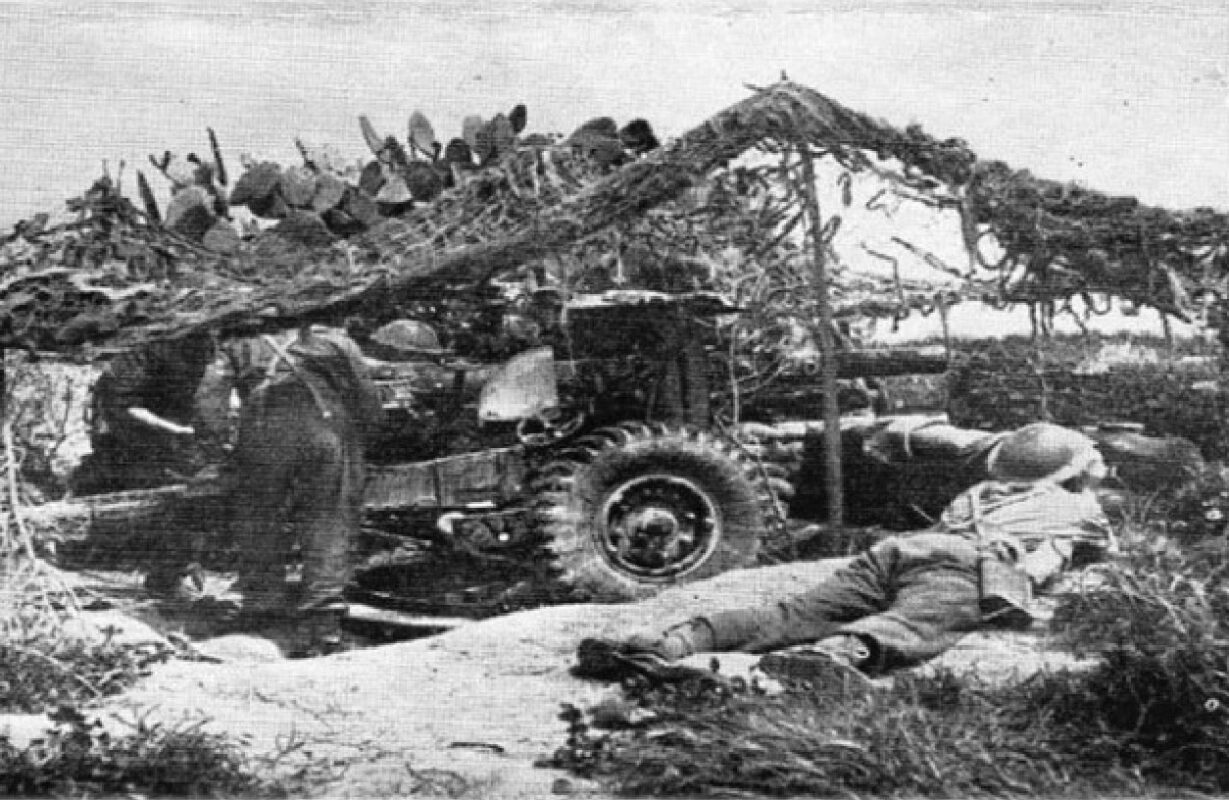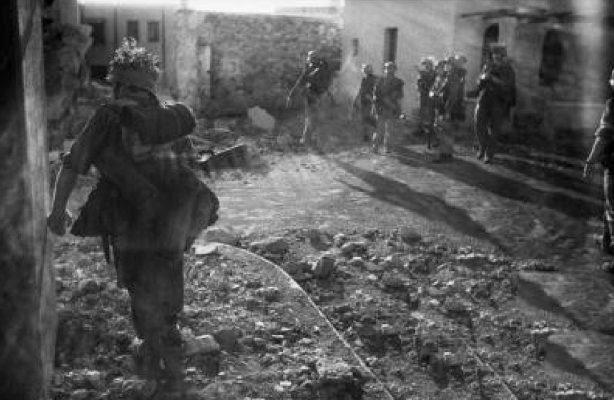
Formed as No 2721 Squadron at Mildenhall in July 1941, having been unnumbered from the previous April and absorbed into the RAF Regiment on 1 Feb 1942. Numbered, it moved to RAF Kenley in 1942, converting to a Field Squadron in October 1942.
Like David Sterling of the SASOne of 5 Field Squadrons allocated to the invasion of Algeria and Tunisia, in November 1942 – Operation Torch. It was to support No 325 Wing (Spitfires VB, Hurricane FGA and Beaufighter Night Fighters) operating out of Algiers as a Naval Cooperation Wing.
When it arrived it was allocated to a forward airfield along with No 4092 LAA Flight. Because of the effectiveness of the German Air Resupply operation from Sardinia It was decided to set up a radar unit on the coast at Cap Serrat, to enable radar detection and Night Fighter interdiction.
2721 Squadron and 4092 Flight were tasked with supporting the mobile radar unit as they made their way to their planned locations and defending them once in position. When the conditions got too bad for vehicles, Pilot Officer Steele of the squadron hired camels and managed to get the units to their destination.
Although not technically behind German Lines the lighthouse at Cap Serrat was extremely exposed. The Squadron held the position until the end of February 1943, when a German armoured counter attack brought them into close proximity of the radar installation and orders were given for its withdrawal. 2721 and 4092 provided close support to the withdrawal and 2788 and 4089 provided the rear guard cover with the Navy able to remove some vital equipment by sea.
By April 1943, the squadron was in the front line, operating as part of the 3rd Infantry Brigade and was allocated a sector of the line near Medjez el Bab. During the night of 20/21 April, the 25-pounder guns of the squadron succeeded in repulsing a German armoured counter-attack firing over open sights at less than 1000m. Additionally, they continuously patrolled “No-Man’s-Land” and retrieved a number of downed RAF and USAAF airmen – an early example of CSAR.
The Squadron was transferred to 2nd Infantry Brigade on 3 May and between 6-12 May was part of ‘S’ Force, an Air Intelligence group that located and secured enemy equipment and personnel in the Bizerta and Tunis areas.
For the invasion of Sicily, the Squadron was allocated to HQ North African Tactical Air Forces. During its time in North Africa personnel of the squadron were mentioned in dispatches four times.
ITALY AND SPEC OPS
After a long period in the line in North Africa, 2721 were rested for Operation Husky, the invasion of Sicily. They were, however, recalled to duty with the American 5th Army in December 1943 after the initial invasion of the Italian mainland. The Squadron continued the work that it had started with in Tunisia as the Protection Team for the USAAF technical intelligence team in the search for enemy technical and aviation secrets.
FROM ANZIO TO ROME
The Squadron was moved to the deadly Anzio beachhead in late May 1944 as the battle of Cassino and Anzio reached their crescendos. In late May, the breakout from Anzio commenced and the squadron was tasked with the seizure of the main Radio Station in Rome and Ciampino airfield. In doing so it became the first British unit into the Eternal City. Such was the regard of the USAAF for the squadron that Squadron Leader McMichael was awarded the Bronze Star for its performance.
RAVENNA
The Squadron was transferred, in September, back to the eastern side of Italy, serving with X Corps of the 8th Army. It operated in the line with units ranging from the Indian Army, Household Cavalry and Canadian Armour. It had a reputation for robust professionalism and élan, demonstrated in a series of contacts and patrol activities during the advance towards Ravenna particularly in the assault and capture of the impressively fortified German stronghold in the Sugar Factory at Classe Fiore just south of Ravenna. This action saw the members of the Squadron win an MC and 3 MM’s as well as numerous MID’s. After almost a continuous 12 months in action, the Squadron was relieved after the taking of Ravenna in December by 2788. Latterly some members of the Squadron were engaged in Special Operations with the SBS in the Aegean Sea and Yugoslavia as part of Cely Force.
PALESTINE
At war’s end the Squadron returned to Palestine where it served during the run down of the mandate at various locations, finally disbanding in 1947 and being renumbered as 52 Rifle Squadron. Squadron Leader McMichael was the most decorated RAF Regiment Officer of the war and the Squadron was also and remains the most decorated unit in RAF Regiment history.

